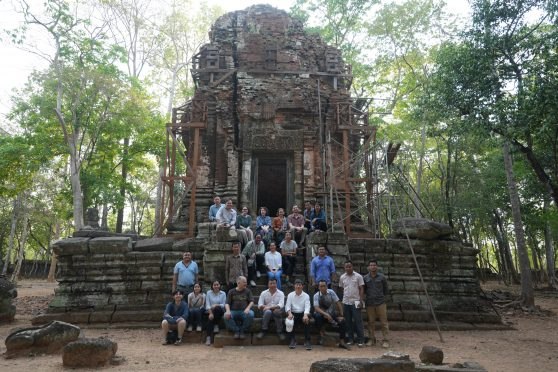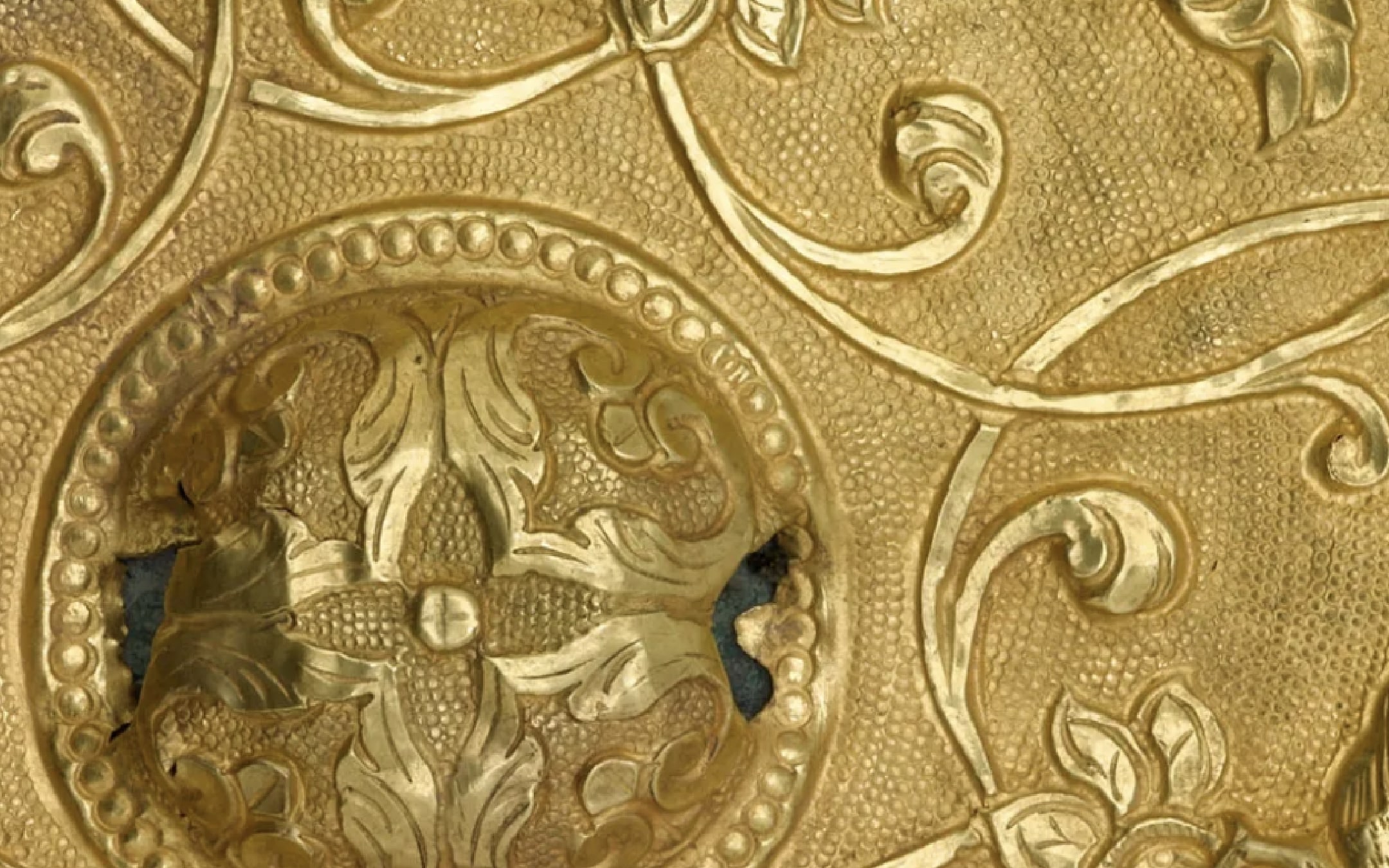National Museum of Asian Art Secures Henry Luce Foundation Grant To Launch Multiyear Cambodian Partnership

Project Will Spotlight Repatriated Cultural Heritage From Koh Ker on the Global Stage
April 24, 2025 | National Museum of Asian Art
The Henry Luce Foundation has awarded a $100,000 grant to the Smithsonian’s National Museum of Asian Art, initiating a multiyear collaboration between the museum and the Ministry of Culture and Fine Arts of the Kingdom of Cambodia. Organized in multiple stages, the initiative’s first phase—focused on project planning through 2025—is funded by the Henry Luce Foundation’s grant. The partnership between the museum and the ministry is built on the co-creation and mutual exchange of knowledge, and it aims to raise global awareness of Cambodia’s cultural heritage, especially that of the repatriated objects of Koh Ker, a UNESCO World Heritage Site. Experts from across the National Museum of Asian Art will design a specialized training program to build the capacity of the museum sector and provide mentorship to staff at the National Museum of Cambodia. The National Museum of Asian Art’s team traveled to Cambodia earlier this month to begin the first phase of this project.
The National Museum of Asian Art’s partnership with the ministry began over two decades ago and the two institutions welcome the opportunity to further enhance their collaboration. In 2023, the museum hosted the event “Reclaiming Cambodia’s Cultural Heritage: Provenance Research in Action.” This public forum provided a platform to share and discuss Cambodia’s work to find and repatriate its cultural heritage.
Following this event, the two institutions signed a memorandum of understanding for ongoing counsel and collaboration. In spring 2024, Chase F. Robinson, Director of the National Museum of Asian Art, joined an international working group that convened in Cambodia to address key challenges related to the care, research and public engagement of Cambodia’s recently repatriated cultural collections. With support from the Henry Luce Foundation, this multiyear collaboration between the museum and the ministry seeks to build upon the trust between the parties and directly address these challenges, ensuring the successful reintegration of important and sacred restituted objects into Cambodia’s cultural landscape.
“The future of museums depends on collaboration,” Robinson said. “By working together with our partners around the world, we can safeguard cultural heritage at risk of being lost and tell better, more informed stories of the history of objects. We are honored to collaborate with the Ministry of Culture and Fine Arts and look forward to sharing knowledge and learning from our colleagues in the Kingdom of Cambodia.”
Cambodian stakeholders see the partnership as a crucial step in cultural revitalization.
“We welcome the sincere collaboration between our two countries and are delighted to work with the Smithsonian Institution, a global leader in the museum world,” said H.E. Phoeurng Sackona, Cambodia’s Minister of Culture and Fine Arts. “We recognize the beauty and brilliance of our ancient royal city of Koh Ker and are excited to begin developing a world-class exhibition about Koh Ker to first open in Cambodia in 2030 and in Washington, D.C., in 2031. It is thrilling to have this opportunity to showcase our national treasures which have been returned to Cambodia, and to know that it will bring positive attention and interest in the rich and fascinating ancient history of Cambodia.”
The ministry sees this collaboration as an opportunity to share—in their own words—their efforts to repatriate cultural heritage objects. These narratives of loss, theft, investigation and recovery will not only empower communities in Cambodia, but also engage and inspire audiences around the world.
The National Museum of Asian Art is equally committed to learning from its Cambodian counterparts. As a global leader in the field, the museum’s impact is strengthened through partnerships with governments, institutions and cultural leaders across Asia. By centering Asian perspectives, the museum upholds its mission to foster cross-cultural understanding. Through this collaboration, it aims to help amplify the voices of Cambodian experts and ensure the country’s rich and complex history is represented with authenticity and depth.
About Smithsonian’s National Museum of Asian Art
The Smithsonian’s National Museum of Asian Art (NMAA) is committed to preserving, exhibiting, researching, and interpreting art in ways that deepen the public and scholarly understandings of Asia and the world. NMAA opened in 1923 as America’s first national art museum and the first Asian art museum in the United States. The museum now stewards one of the world’s most important collections of Asian art, with works dating from antiquity to the present, from China, Japan, Korea, South Asia, Southeast Asia, the pre-Islamic Near East, and the Islamic world (inclusive of Central Asia, the Middle East, and North Africa). The museum also stewards an important collection of nineteenth- and early twentieth-century American art.
Today, NMAA is emerging as a leading national and global resource for understanding the arts, cultures, and societies of Asia, especially at their intersection with America. Guided by the belief that the future of art museums lies in collaboration, increased access, and transparency, NMAA is fostering new ways to engage with its audiences while maintaining its commitment to excellence.
Located on the National Mall in Washington, DC, the museum is free and open 364 days a year. The Smithsonian, which is the world’s largest museum complex, welcomes twenty to thirty million visitors yearly. For more information about the National Museum of Asian Art, please visit asia.si.edu.
About Koh Ker
Koh Ker, the temporary royal capital of the Angkorian empire, is renowned for its monumental temples and sculptures, many of which were created on an unprecedented scale during the tenth century. However, due to its remote location and the spectacular nature of its statuary, Koh Ker became the target for extensive looting, particularly during the 1970s to the 1990s. In recent years, the Ministry has prioritized the site as part of ongoing efforts to reclaim Cambodia’s cultural heritage, leading to the successful return of numerous significant works of art.
About the Henry Luce Foundation
The Henry Luce Foundation seeks to deepen knowledge and understanding in pursuit of a more democratic and just world. Established in 1936 by Henry R. Luce, the co-founder and editor-in-chief of Time, Inc., the Luce Foundation advances its mission by nurturing knowledge communities and institutions, fostering dialogue across divides, enriching public discourse, amplifying diverse voices, and investing in leadership development.
For Press Inquiries
PressAsia@si.edu
Phone: (202) 633-0271
Fax: (202) 633-0043
Office of Marketing and Communications
National Museum of Asian Art
PO Box 37012, MRC 707
Washington, DC 20013-7012

